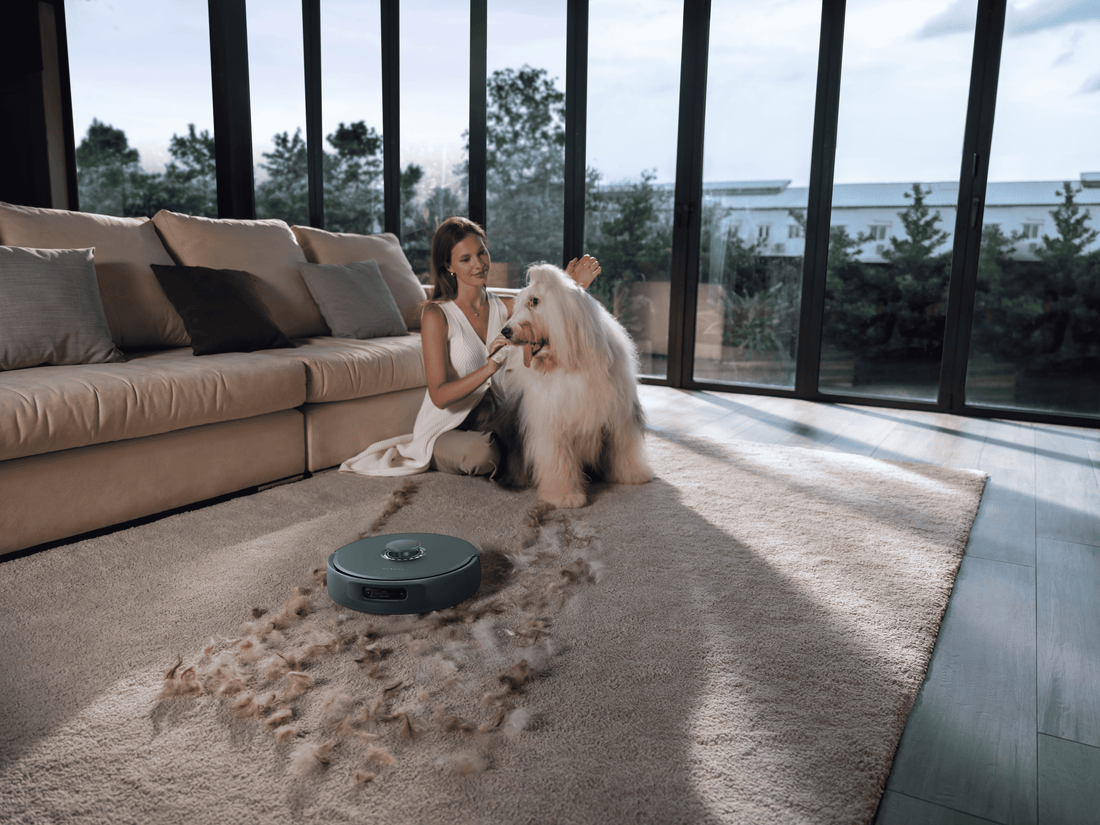
How to get your pets used to your robot vacuum cleaner
Share
How to get your pets used to your robot vacuum cleaner
Many pet owners experience that their animals become insecure and afraid when the robot vacuum cleaner is started. It's actually quite natural because the robot both moves in a way the animals aren't used to and often sounds different from other devices. However, with patience and the right approach, it is usually possible to make pets feel safe. We have asked animal expert Anna for tips on what to do when getting a robot vacuum cleaner.
Is it common for robotic vacuum cleaners to initially create stress in animals?
Anna: Hello! Yes, it's actually quite natural. The pets perceive the robot vacuum cleaner as something new and potentially threatening – it moves by itself and can also make sounds that they are not used to. For some animals, it therefore feels unfamiliar and scary. With patience and the right approach, however, it is usually possible to get them safe.
How should one start introducing the robot vacuum cleaner to their pet?
I usually recommend that you proceed very slowly.
- Place the robot in a familiar room – but leave it off at first. Let the animal explore it at its own pace. Feel free to reward with treats or a calm voice when the animal approaches the robot without fear.
- Move the robot manually without sound - so that the pet sees that it can move, but without having to deal with the sound at the same time. It's a great way to reduce stress.
- Step-by-step audio introduction - start the robotic vacuum cleaner at low volume or in an adjacent room. Feel free to associate the sound with something fun, such as a favorite treat, so that the animal associates the new sound with something positive.
VWhat role does positive reinforcement play in this process?
A very big role! When the pet shows calm or curious behavior near the robot vacuum cleaner - regardless of whether it is turned off or on - it is good to immediately reinforce it with praise, treats or play. It creates a positive association. If the animal instead becomes scared or unsure, try to stay calm and do not push for any close contact. If you force the pet when it is frightened, the fear can easily become worse.
When it comes to desensitization, it is often mentioned that one should introduce "motion without sound" and "controlled sound exposure" - how does that work in practice with a robot vacuum cleaner?
- Movement without sound: Means you move the robot, but keep it powered off. In this way, the animal gradually gets used to the movement itself, without having to deal with the sound yet.
- Controlled sound exposure: When the animal is comfortable with the movement itself, you can start the robot on a lower sound mode or in an adjacent room. Reward the animal when it remains calm. Then gradually increase the volume or distance.
How can you ensure that the pet gets a safe place when the robot vacuum cleaner is running around?
It is good to have a separate space or a corner where the animal can rest if it wants to avoid the noise and movement. Add a cozy blanket, beloved toys and maybe a water bowl. In this way, the animal knows that it can retreat there when the robot moves around.
Is it possible to use the same method for all pets, or are there differences between different species and breeds?
The basic principle – slow introduction and positive reinforcement – applies to most pets. But some breeds or species may be more sensitive to sound or have a stronger flight instinct. Then you may have to be extra careful and take more, smaller steps. If you feel unsure, it is always good to consult a veterinarian or a professional behavior expert.
Are there any that are specifically designed for households with pets?
Joh, absolutely. Take it, for example Narwal I have now if I compare to my previous robot vacuum which was not as animal friendly.
- The suction power picks up more sheep hair than my previous one.
- Tangle-free living, the previous robot vacuum cleaner had a big problem with my dog's pet hair getting stuck in the brushes.
- Camera AI technology – It doesn't run at my dog, but smartly recognizes it, which all robot vacuums should have.
- Quiet operation - Perfect, just what I needed. I notice that my dog is much more comfortable being in the same room.
If you have a puppy or kitten, is it easier to get used to them early?
Really! Younger animals are often more malleable and adapt more easily to new impressions. If you let the robot vacuum in their environment right from the start, they can quickly learn that it is not dangerous. Feel free to use playtime or cozy treats to create happy memories connected to the robot.
Thanks for all the tips, Anna! Do you have any final words of encouragement for pet owners struggling to get their animals used to the robot vacuum?
To be patient and consistent is the key. In the beginning, you may have to take very small steps, but continue in the right direction. Also, try not to create expectations that it will go super fast. For some pets, it only takes a few days to accept the vacuum, while others may need weeks. But with positive reinforcement, reassurance and time, it usually works out for the vast majority.
Summary Frequently Asked Questions (FAQs)
Question: How can I introduce the robot vacuum cleaner in the best way?
Response: Start by turning it off in a room where the pet is safe. Let the animal explore the robot at its own pace and give lots of praise and treats.
Question: What if my pet continues to be anxious even after several attempts?
Response: Be patient and take even smaller steps. Separate the animal and the robot physically during the actual cleaning. Then proceed carefully with short exercises, always with positive reinforcement.
Question: Are some animals more likely to be afraid of robot vacuum cleaners?
Response: Yes, some individuals, breeds or species are more sensitive to sound and movement. Adapt your tactics to your particular pet and seek professional help if necessary.
